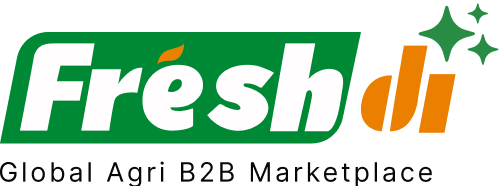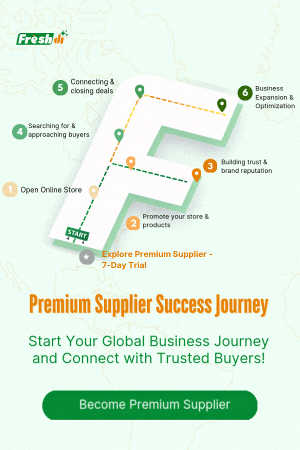Introduction – Current State of Play: The Seafood Sector in Vietnam
Vietnam’s seafood industry is moving fast in 2025, and if you’re a buyer or stakeholder in the global seafood trade, now’s the time to pay attention. The country has long been a seafood powerhouse, but recent events have sent fresh ripples through the market.
In July 2025, Vietnam implemented new sustainability policies aimed at preserving marine biodiversity while boosting the traceability of exports. On top of that, a landmark trade agreement with the EU and Japan has lowered tariffs on several seafood categories, shaking up global pricing structures. Meanwhile, fluctuating weather conditions in the Mekong Delta and rising sea temperatures have impacted aquaculture yields, especially affecting shrimp and pangasius farming.
Add to that a post-pandemic global demand surge for healthier protein sources like fish, and you’ve got a seafood sector that’s transforming by the day.
So what does this mean for importers, distributors, and seafood brands around the world? Simple — you need to stay alert, adapt quickly, and make smarter sourcing decisions. The risks are higher, but so are the rewards.
Deep Dive – What’s Making Headlines? Key Recent News & Impacts
Let’s zoom in on the most important headlines impacting the Vietnamese seafood market as of July 2025:
-
EU-Vietnam-Japan Trade Agreements Finalized
These deals reduce import duties on a wide range of Vietnamese seafood products. Tuna, cuttlefish, and frozen shrimp are among the winners here, suddenly becoming more price-competitive in European and Japanese markets. -
New Traceability Regulations Enforced
Vietnam’s Ministry of Agriculture has rolled out digital traceability requirements for all seafood exports. Every lot now needs to be tagged with a QR code tracing the product back to its farm or fishing vessel. This move boosts buyer confidence but also increases compliance costs. -
Aquaculture Disruptions in the Mekong Delta
Erratic rainfall and salinity intrusion have reduced pangasius yields by 12% year-on-year. This is creating short-term price spikes and supply bottlenecks for one of Vietnam’s top exports. -
Massive Investments in Cold Chain Logistics
Several logistics firms have announced new facilities and partnerships to improve cold storage and export timelines. This is a game-changer for maintaining product quality, especially for frozen and value-added seafood. -
U.S. and China Demand Rebalancing
While U.S. demand for sustainable, traceable seafood has grown, Chinese importers are shifting focus to dried and value-added seafood due to changing consumer preferences.
Each of these updates has a domino effect on suppliers, pricing, and sourcing strategies. Platforms like Freshdi are helping buyers stay ahead by offering real-time RFQ trends, verified supplier profiles, and alerts on regulatory changes.
Top 7 Verified Seafood Suppliers in Vietnam – Adapting to Today’s Market
Here are the top-performing, verified seafood suppliers in Vietnam this July 2025. These companies are staying agile, compliant, and competitive despite market turbulence.
-
BINHDINH FISHERY JOINT STOCK COMPANY
Known for premium yellowfin tuna and fresh saku cuts, this supplier is leading the charge in sustainable fishing practices. Their HACCP and EU certifications make them a go-to for high-end retail and foodservice customers. -
iGM Vietnam Company Limited
Specializing in frozen value-added seafood, iGM is gaining traction in North America and Europe. Their product innovation — including ready-to-eat shrimp skewers and seafood nuggets — caters to the modern, convenience-driven consumer. -
TRUONG PHUC SEAFOOD COMPANY LIMITED
A leader in surimi production, Truong Phuc offers competitive pricing and strong export reliability. Their frozen Itoyori surimi is well-reviewed on Freshdi for consistency and shelf life. -
Anh Kim Food Production Joint Stock Company
Anh Kim is breaking new ground with ready-to-eat mixed seafood porridge — a hit in Asian markets. Their flexibility in packaging sizes makes them ideal for retailers and distributors alike. -
VH FOOD .,JSC
Their high-quality frozen pangasius fillets are certified HALAL and HACCP, making them widely accepted in Middle Eastern and Southeast Asian markets. -
Blue Lotus Exim Co., Ltd.
A top name in dried seafood, especially anchovies. They’ve recently expanded into premium-grade dried squid and shrimp, ideal for Chinese and Korean importers. -
TANIS IMPORT & EXPORT COMPANY LIMITED
Specializing in dried cuttlefish bones, TANIS serves both seafood buyers and pet supply markets. Their focus on purity and bulk supply makes them unique.
Dynamic Ranking Note: On platforms like Freshdi, supplier rankings are updated monthly based on RFQ volume, buyer feedback, and export documentation. Always check the latest “Suppliers of the Month” section for up-to-date insights.
Market Navigation – Strategic Responses to The Current Seafood Landscape in Vietnam
Alright, let’s talk strategy. With so much change happening, what should buyers and importers actually do?
First, make traceability your friend. Buyers who choose suppliers that already comply with Vietnam’s new digital traceability laws will avoid customs issues and improve brand credibility.
Second, diversify your supplier base. If pangasius is running into yield issues due to Mekong weather disruptions, consider alternate fish options like yellowfin tuna or frozen tilapia. Suppliers like BINHDINH and iGM Vietnam are already adapting their product lines to fill these gaps.
Third, pay attention to value-added trends. With labor costs rising globally, pre-processed, ready-to-cook seafood is gaining momentum. Companies like Anh Kim and TRUONG PHUC are ahead of the curve here.
Fourth, watch your logistics. With cold chain improvements rolling out, now’s the time to lock in suppliers who can ensure consistent quality, especially for frozen goods. Verified exporters on Freshdi often include cold storage and transit data in their profiles.
And finally, check RFQ patterns. Platforms like Freshdi provide real-time RFQ insights that can flag emerging demand trends — super useful when planning your next bulk order or product launch.
Conclusion – Key Takeaways for Businesses in a Rapidly Evolving Market
Vietnam’s seafood market in July 2025 is not business-as-usual. From new trade deals to traceability tech, the landscape is shifting fast — and the smart players are those who move with it.
Here’s what you should walk away with:
- Stay current on Vietnamese regulatory changes, especially in traceability and sustainability.
- Choose suppliers with verified profiles, export experience, and reviewed performance.
- Use platforms like Freshdi for market intelligence, dynamic supplier rankings, and trust signals.
- Adapt your sourcing strategy to weather disruptions, demand shifts, and logistics updates.
- Invest in long-term supplier relationships that offer flexibility, compliance, and innovation.
Checklist for Buyers Navigating Vietnam’s Seafood Market
✅ Verify supplier certifications (HACCP, HALAL, EU)
✅ Confirm traceability compliance (QR-coded systems)
✅ Monitor RFQ trends via Freshdi
✅ Lock in contracts with cold-chain capable exporters
✅ Diversify product and supplier portfolios
✅ Align offerings with consumer demand (value-added, ready-to-eat, sustainable)
How Freshdi Helps You Navigate the Chaos
- Real-time supplier verification and performance metrics
- Dynamic RFQ tracking and alerts
- Supplier of the Month updates based on real buyer behavior
- Direct communication with high-performing exporters
- Custom sourcing solutions based on market trends
References
Placeholder for reference links and data sources used in this article.
FAQs
1. Why is traceability so important in Vietnam’s seafood industry now?
Because of new regulations introduced in 2025, all exports must be digitally traceable to ensure food safety, sustainability, and origin verification. It’s also key for gaining access to high-value markets.
2. Which seafood products from Vietnam are currently in high demand?
Yellowfin tuna, pangasius fillets, dried anchovies, and value-added shrimp products are trending due to new trade deals and shifting consumer preferences.
3. What makes Freshdi different from other B2B seafood platforms?
Freshdi offers dynamic supplier rankings, verified certifications, real-time RFQ data, and a direct line to responsive exporters — making it easier to make informed sourcing decisions.
4. How can I find Suppliers of the Month on Freshdi?
Just head to Freshdi’s homepage or supplier section — they regularly feature top-rated suppliers based on RFQ activity and buyer feedback.
5. What’s the biggest risk in sourcing seafood from Vietnam right now?
The main risks include supply chain disruptions due to weather, rising compliance costs, and sudden shifts in global demand. But with the right tools and partners, these can be managed effectively.


